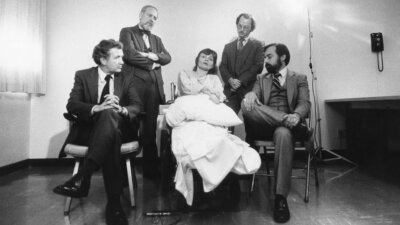
Courtesy of Sundance Institute | photo by Los Angeles Times.
At face value, “Life After” starts with a story about Elizabeth Bouvia, a disabled woman from California who sought the right to die in 1983. However, Bouvia’s impact – and “Life After” as a result – is about so much more, including: the lack of accessible, affordable, quality healthcare; ableist views portraying disabled people in society as having less value than nondisabled peers; the lack of employment opportunities; and the feeling of isolation that many disabled people face.
After years of courtroom trials as Bouvia fought for the right to die in the 1980’s, she disappeared from public view. In “Life After,” disabled director Reid Davenport sought to determine what happened to Bouvia. Four decades after her trial, he wanted to know what today’s society thinks about giving disabled people access to assisted suicide. Lending his voice in the beginning of the film, Davenport shares, “I see myself in how Elizabeth moved through the world.” During this narration, the camera view is what Davenport sees from a seated position as he navigates the world while utilizing a wheelchair.
Of note, “Life After” brings Davenport back to Sundance after his 2022 Sundance Film Festival debut, “I Didn’t See You There,” which is shot from his view. During a Q&A following the premiere of “Life After,” Davenport shared that while he showed himself in this new film, he was deliberate in doing so in a limited way. Instead, he shined the spotlight on society’s inability to view disabled individuals the same way as nondisabled peers.
During the Q&A following the premiere, Davenport talked about “society making death the default for disabled people” as healthcare systems do not enhance disabled people’s lives.
Doctors and courts promoted the idea that Bouvia did not have a right to decide when it came to the idea of assisted suicide and making decisions affecting her life, even as Bouvia said she did not have a quality of life. The argument she made is that she deserves the opportunity to have agency not just over her life, but also over the end of her life.
Ultimately, Bouvia decided to live, because she was able to have access to improve her quality in life. Living in an apartment in South Pasadena, she qualified for government benefits covering her equipment and staffing. However, in order to qualify, she had to stay unemployed because she was restricted in her ability to save any money. Bouvia died in 2014.
“There are parallels between Elizabeth’s tumultuous time under the spotlight and the quiet death,” Davenport narrates. “She wasn’t heard enough in either.”
“Life After” showcases that what is important is that all individuals – including those with disabilities – have the freedom of choice. In a Meet the Artist Sundance video, Davenport said Bouvia’s fight “kicked off a national debate about autonomy, dignity, and the value of disabled lives.”
Davenport also shared that Bouvia’s story has “disturbing relevance to today.”
“This film casts disability into a political light,” he said. “While it begins with the question of assisted suicide, it illuminates the many ways disabled people are forced down roads of desperation… I hope this film confuses you, challenges you, angers you, and inspires you to question and fight against the status quo.”
“Life After” premiered at the 2025 Sundance Film Festival as part of the U.S. Documentary Competition and took home the U.S. Documentary Special Jury Award. In addition to screening in both Park City and Salt Lake City, this film was available online, offered audio description, and has a photosensitivity warning.






